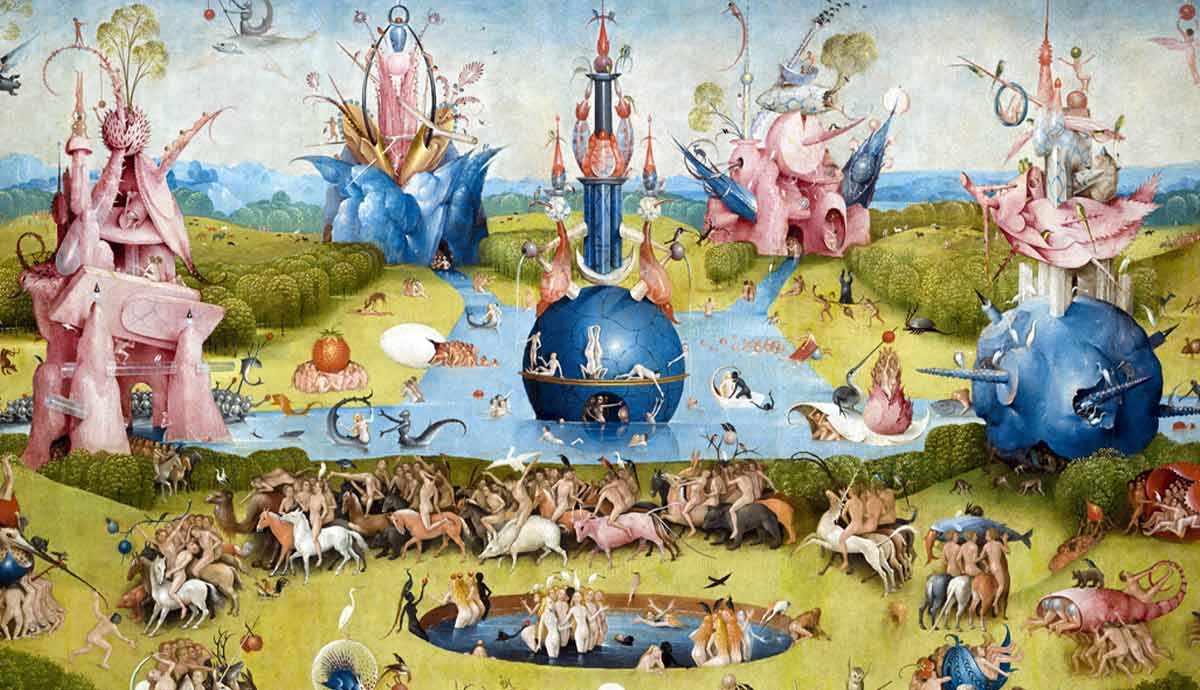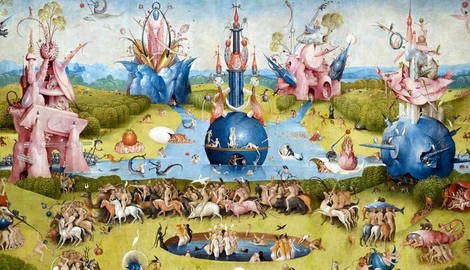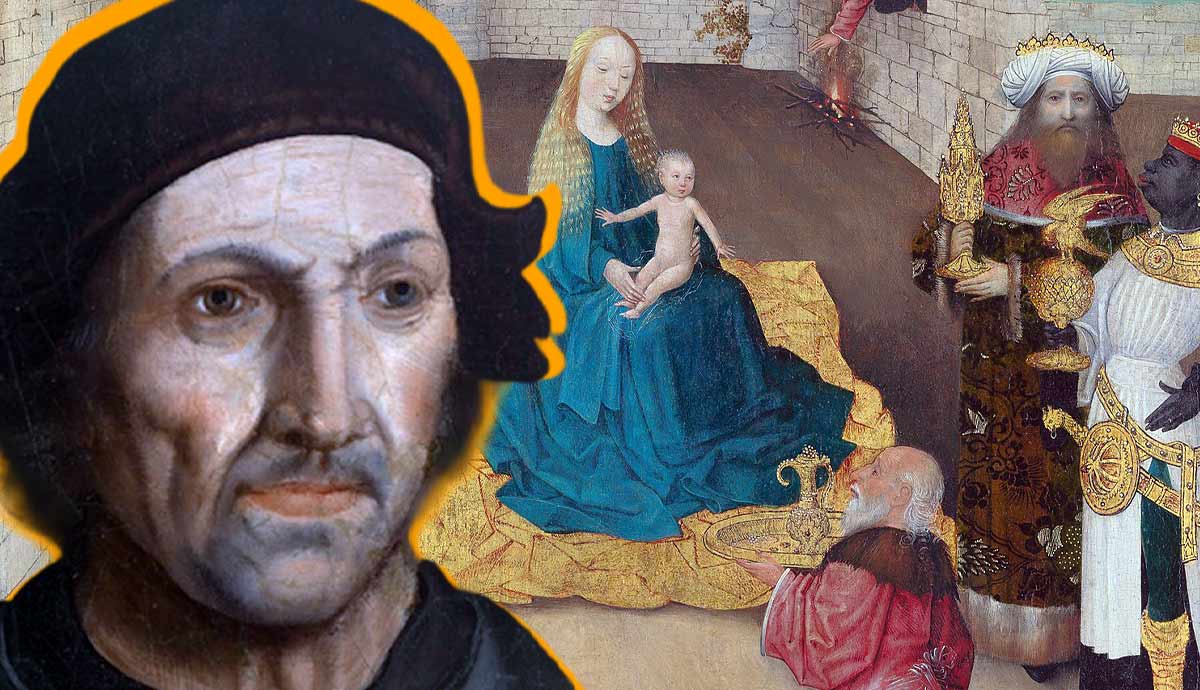
The Garden of Earthly Delights by Hieronymus Bosch remains a complex riddle that is next to impossible to solve. The three-panel work includes images of Heaven and Hell, as well as strange portrayals of human sin. Bosch was a deeply religious and god-fearing man who reflected his ideas of sin and morality in his works. Read on to explore the religious and philosophical symbolism behind The Garden of Earthly Delights.
The Garden of Earthly Delights by Hieronymus Bosch

The name Hieronymus Bosch became almost synonymous with the dark and bizarre. His paintings created in the late 15th century often featured images of sinners punished for their deeds, strange animal hybrids, and the general sense of anxiety-filled confusion. Bosch lived in the age of strict moral values, where all pleasures of the flesh were deemed inherently sinful. This idea was further propagated by the expectations of the upcoming apocalypse, which was predicted by preachers and theologists.
Hieronymus Bosch did make a title for this work, thus the name was a later addition. The well-known title The Garden of Earthly Delights emerged only in the 19th century. In earlier sources, the work was referred to as simply an odd painting or as the strawberry painting due to the frequently repeated motif of the berry.
Panel by Panel: Eden

The Garden is an incredibly complex painting that is almost impossible to describe accurately. Still, to make at least some sense of the work, it is best to explore it going from panel to panel, noting at least the most obvious details. On the left panel, we see Eden and God (whom Bosch depicted as particularly young and more akin to Jesus, most likely referring to the unity of God the Father and God the Son) introducing newly created Eve to Adam. Eden is filled with birds and animals, including strange three-headed lizards.
The scene is overall peaceful, yet it holds an important clue to what is about to happen. In this ideal lush garden, violence is already present, as in the background, we can see a lion devouring its prey and a cat carrying a dead lizard in its mouth. The character dynamic between Adam and Eve already suggests the following sequence of events. In the Medieval religious paradigm, many believed that Adam and Eve had sex before the Fall but did not experience lust—which was passed to them through the Forbidden Fruit.
The Garden: The Most Mysterious Part of Bosch’s Paintings

The central panel of the work is the most complex and most mysterious, leaving room for endless interpretations. Once again, it represents a fantastical lush garden, this time populated not with animals but with humans. Surprisingly for Bosch’s era, the figures are ethnically diverse, with numerous dark-skinned characters present on equal terms with the white ones. Almost all figures are nude and interact with each other by playing some strange games with an obvious erotic undertone. Some are bathing, some are playing with giant berries, and some, like a man on the left side of the panel, are embracing a human-sized owl. Animals are also present at the scene, both realistic and invented.
One of the most prominent natural motifs in Bosch’s triptych is the image of strawberry. The characters carry strawberries in their hands and on their heads, feed each other with them, and even attempt to take a bite of an unnaturally huge berry. However, the meaning of this symbol is unclear. Other berries are also present. Blackberries and gooseberries are similarly hard to explain, while cherries act as a symbol of pride.
The only clothed figure is a man in the bottom right corner, who looks at the scene from a cave. Given the contrast with the rest of the figures, art historians believe that the man was the work’s commissioner, whom Bosch included in the picture. The patron is not participating in the overall chaos unfolding at the scene and curiously observes it from his hiding spot.
Hell

The right panel is a representation of Hell, with its darkness, fire, and suffering, contrasting with the joyful tone of the central image. Scenes of war, torture, and emotional and physical suffering dominate the panel. Gone is the cheerful and shameless play: many figures, probably realizing the depth of their depravity, attempt to cover their naked bodies and hide. Bosch’s Hell is unusually loud for a painting: the chaos of suffering humans and monsters tormenting them is too easy to imagine in a sound form. The punishment attributed to sinners in Bosch’s scene differs from character to character and is surprisingly innovative. Most art historians agree that each type of torture is related to the sin being committed by each figure. We can see greed, vanity, lust, or addictions like gambling or drinking.
Just like in other panels, animals appear here too. Many of these animals have direct connotations with sin, like the pig in monastic clothing harassing a man. Mice and serpents were also emblems of lust, treated as phallic symbols in the Medieval paradigm.
However, the most prominent elements of the scene are musical instruments and the men playing them. Sometimes, quite unconventionally, like the figure of a man with a flute sticking out of his bottom. Most art historians agree this expressed Bosch’s moralistic stance against traveling musicians that frequented fairs and celebrations. With their bawdy and often obscene poetry, they were believed to corrupt the souls of good Christians.
Bosch’s Cult Accusations

The strange erotic images present in the painting led some art historians to assume that the artist possibly could have belonged to a strange Medieval Christian cult. The Adamites believed that Christian rituals ought to be performed only in the nude so that the priests and followers would approach the divine love and wisdom of Adam and Eve. The Adamites were considered heretics and prosecuted by the official church.
However, given the piety of Bosch and his significant social importance in the local community, it is unlikely that he was ever engaged in such heretical activities. Despite the strange and often disturbing look of some of his paintings, his ideas fit neatly into the general religious doctrine of his time. Even his erotically charged scenes present in the Garden of Earthly Delights remained within the acceptable boundaries, as they acted as allegories of sin in all its variety.
Bosch’s Possible Self-Portrait

Among the key images on the panel representing Hell is the Tree Man—a giant figure of a man’s torso standing on its arms like on tree trunks. The inside of the body is empty and acts as a space where unknown men dine at the table, each seated on an animal instead of a chair. The Tree Man’s head is turned towards the viewer, observing the scene unfolding under his enormous body. Some art historians believe it was Hieronymus Bosch’s self-portrait due to the ironic and observing expression that differs from the overall mood of the scene. We do not have any surviving portraits of Bosch made during his lifetime, but the existing posthumous depictions bear a remote resemblance to the Tree Man.
The Garden of Earthly Delights by Hieronymus Bosch: Life Allegory

Most art historians agree that the painting can be interpreted as an allegory of human existence. Before the Garden, Bosch had already painted a complex work with a similar message. His triptych The Haywain represented an enormous haystack surrounded by a foolish crowd of people of all classes and backgrounds, each desperately trying to steal a larger piece from the stack. On their way they fight, steal, and otherwise sin in the mindless struggle for perishable material goods. Similarly, the image of Hell on the right panel was intended to remind us of the eternal suffering that awaited those who followed the path of greed.
Quite possibly, the Garden held a similar moralistic attitude. If The Haywain focused on greed, the Garden, given the eroticized figures, could have represented the dangers of lust. However, the tone of the Garden’s central panel is much less accusing and repulsive than that of The Haywain.
At the beginning of the 17th century, a Spanish poet and friar Jose de Siguenza described the Garden as an emblem of vanity and the strawberry flavor that fleets almost instantly, just as earthly pleasures disintegrate in eternity. In this context, the three panels turn into a cohesive narrative of the origins of humanity’s sin, its manifestation, and the logical result of it in the form of punishment.










